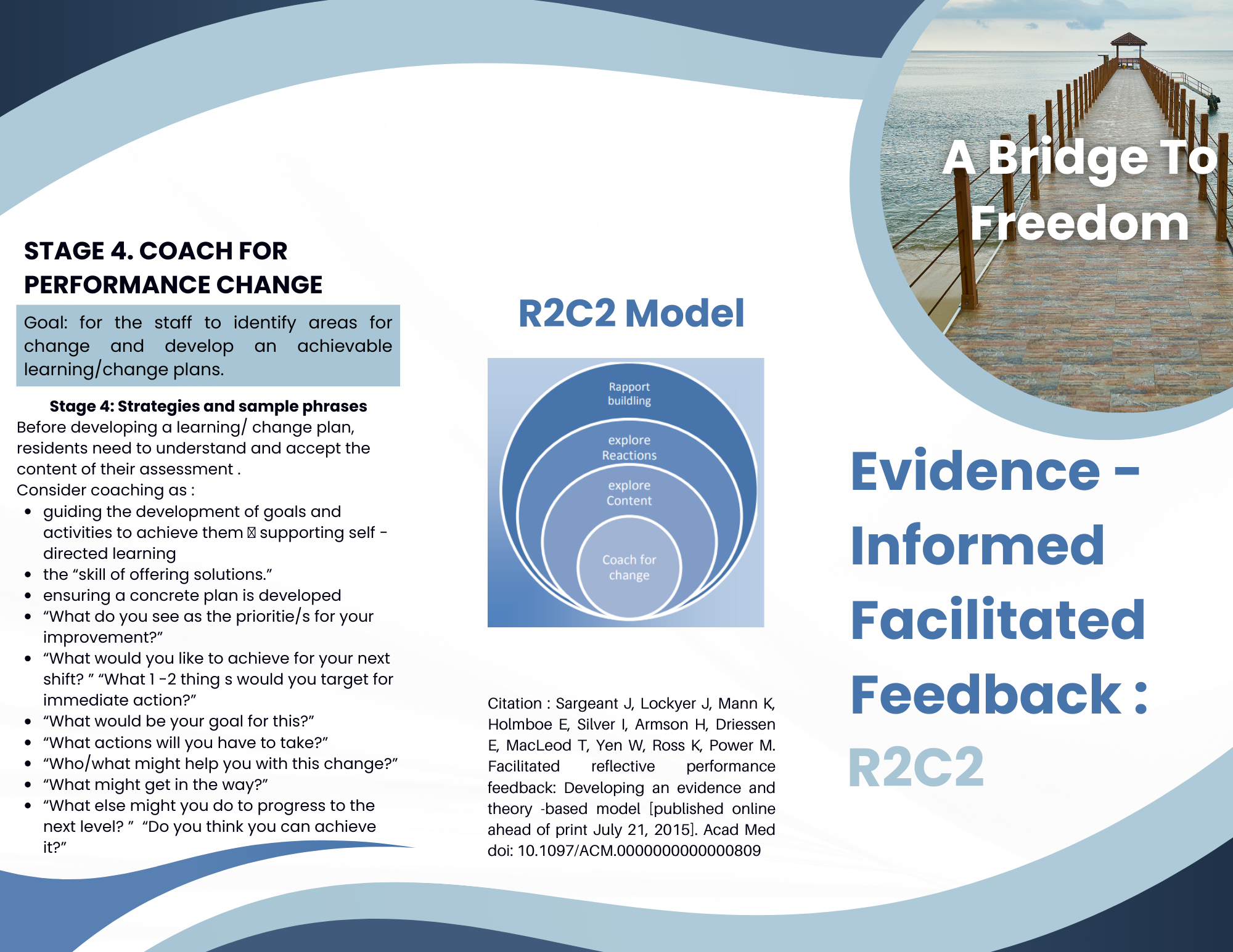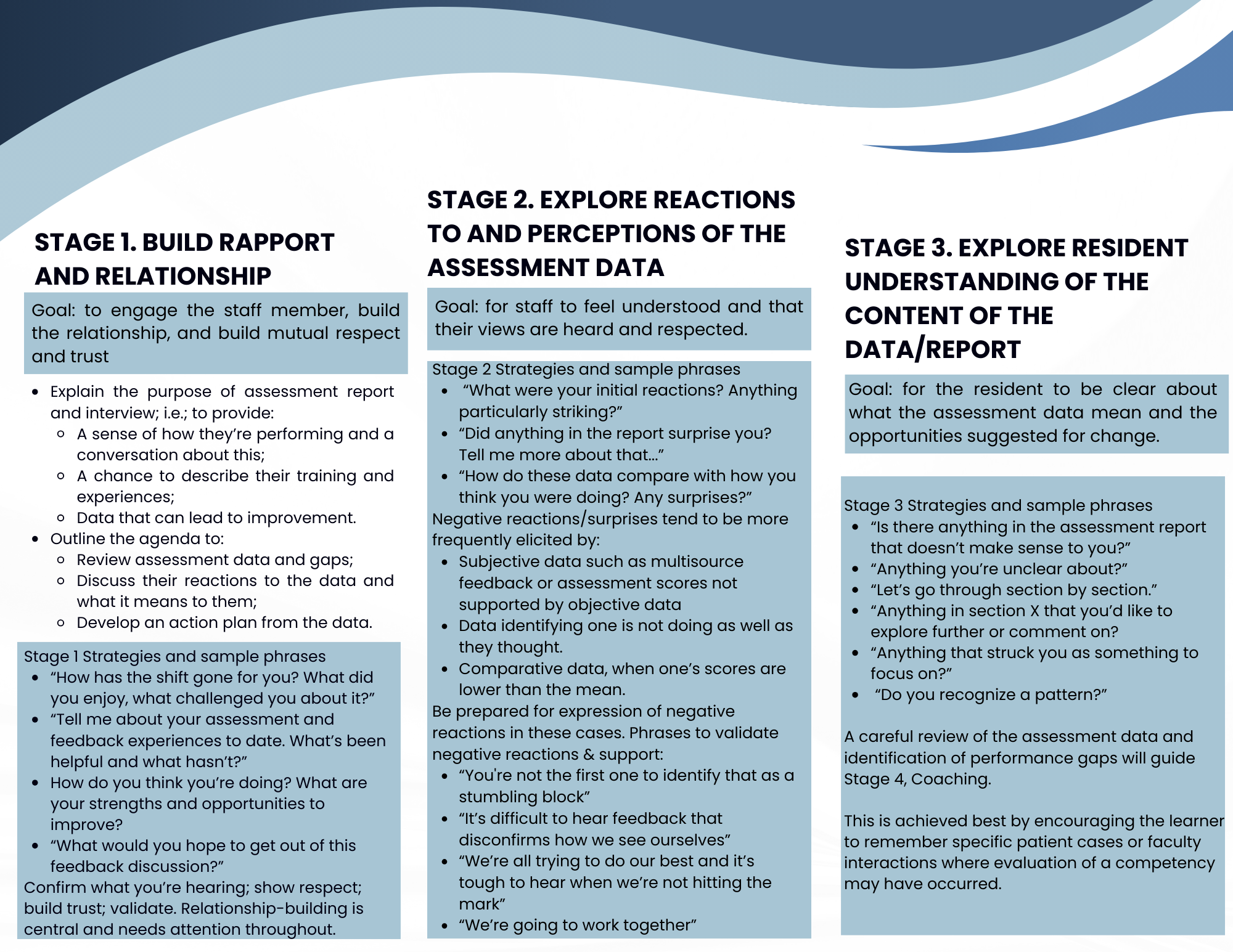Select evidence-based evaluation strategies according to their efficacy with specific client systems
Below is an excerpt from the New Organization Proposal for A Bridge to Freedom, from the Advanced Administration Practice: Administrative and Leadership Skills course, which exhibits the organization’s staff evaluation plan. I came up with this evaluation method using my social work skills and knowledge of assessments and evaluations and used systems theory. Appropriately evaluating employees performance empowers the individual and shows the organizations care for the dignity and worth of the person. I used the cognitive processes of analyzing and applying and the affective process of organization.
The full paper can be found here.
______________________________________________________________________
The evaluation method that we would use with staff would be the R2C2 method, which is an evidence-based reflective model for providing assessment feedback. This model, which is often used with medical residents, would be an important part of our organization because it has the following positive goals and outcomes: Developing a relationship and rapport with the employees, exploring reactions to feedback and assimilation with their own self-assessment, assisting employees “in understanding both the content of their feedback and the standards or milestones against which they are being measured” as well as coaching them “in identifying performance gaps, setting learning and improvement goals, developing and implementing realistic plans to address these, and assessing the plans.” (Sargeant et al., 2016, pg. 3).
An article by Sargeant and colleagues (2016, pg. 3) mentioned, “The model is intuitive, especially within competency-based education, is easy to follow, and makes sense to faculty, which makes it easy to implement in most programs.” Though this method is usually used in the medical field, the social service fields are very much competency-based, so this would be a good fit in our organization. This study continues to mention that one reason this method stands above traditional evaluation is that in formative evaluations the feedback isn’t always accepted or implemented (Sargeant et al., 2016, pg. 2). This evaluation method does not just allow for feedback to be given, but for reflection as well as a follow-through in job performance improvement. Below is a handout that would guide how this evaluation and feedback process would go. We have adapted a model that is usually used in medical settings to be appropriate for a social services setting (Sargeant et al., 2015):


References
R2C2 feedback and coaching resources. (n.d.). Dalhousie University. https://medicine.dal.ca/departments/core-units/cpd/faculty-development/R2C2.html
Sargeant, J., Armson, H., Driessen, E., Holmboe, E., Konings, K., Lockyer, J., Lynn, L., Mann, K., Ross, K., Silver, I., Soklaridis, S., Warren, A., Zetkulic, M., Boudreau, M., & Shearer, C. (2016). Evidence-Informed Facilitated Feedback: The R2C2 Feedback Model. MedEdPORTAL Publications, 12. https://doi.org/10.15766/mep_2374-8265.10387
Sargeant, J., Lockyer, J., Mann, K., Holmboe, E., Silver, I., Armson, H., … Power, M. (2015, July 21). Facilitated reflective performance feedback: Developing an evidence and theory-based model. Academic Medicine. Advance online publication. https://doi.org/10.1097/ACM.0000000000000809
